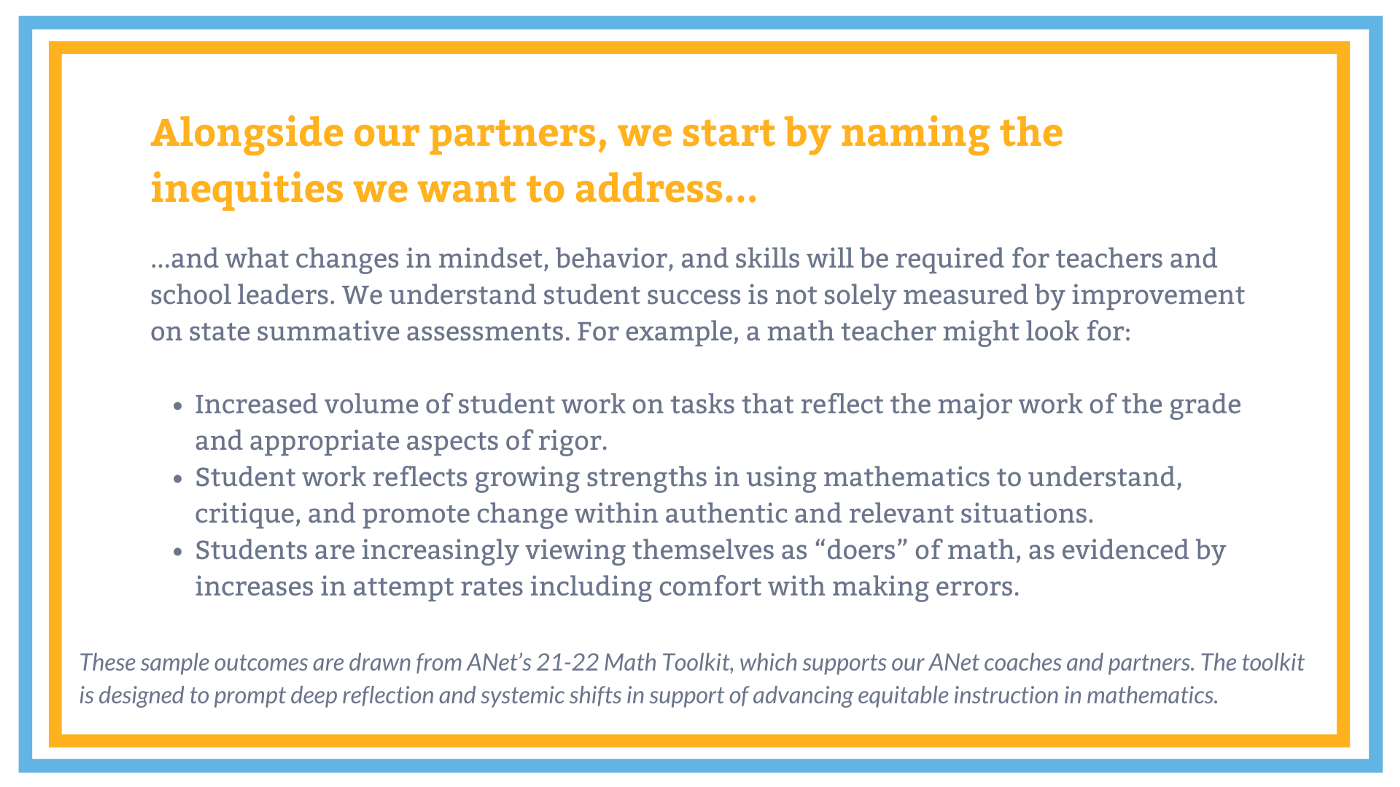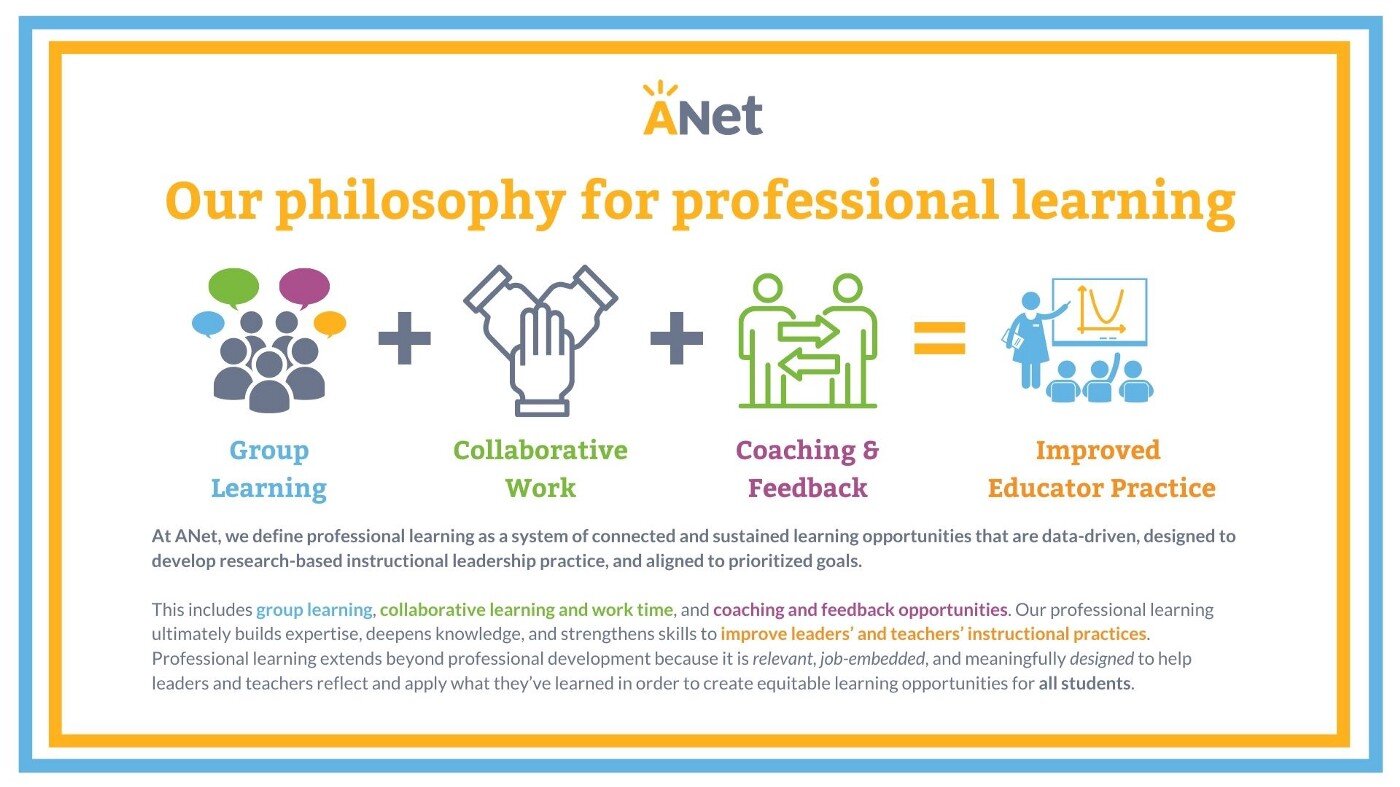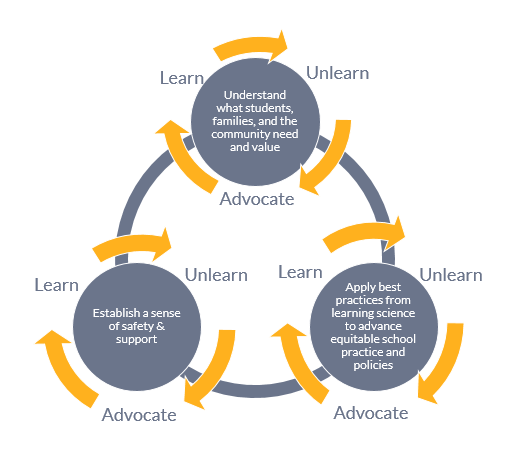America’s schools and districts have an unprecedented opportunity to invest in our students and their futures. For the past fifteen years, ANet has worked alongside school, district, and state-level leadership teams to strengthen core instruction and achieve breakthrough results for students. We have seen what works. We deeply believe that coherence within any education ecosystem is key. Today’s K-12 federal funding creates a once-in-a-lifetime opportunity for districts and schools to create more equitable learning experiences for all students. But without careful planning principles, we might look back in a few years having made no real tangible impact in the lives of the students we serve — or worse yet — inadvertently see the result of this stimulus further exacerbating long-standing inequities.
Below, we outline our five guiding principles for education leaders as they plan to invest ESSER funds:
Listen
Key Question: Whose voices are you listening to?
Students have always been at the heart of education. For many years, however, the system has failed in its promise to teach all students well, and it has failed to hear, see, and design complete learning experiences that honor students’ unique perspectives and experiences. If we know that one size does not fit all, then we must do more to tailor to our communities’ needs. And as we faced the twin pandemics of this past year, we all have had to confront the compounding impact of that reality. Heading into this next year, it is incumbent on leaders and educators at all levels to earnestly consider how they are elevating, listening to, and taking action in response to the voices of the students and communities they serve. We aim to listen intently and also create the cultures, practices, and leadership that, together, lead to increased student learning, engagement and sense of belonging.
Through our anti-racism and culture team’s partnerships with the Ferguson-Florissant School District in Missouri, we are setting up system leadership teams to be “lead listeners.” We are creating and training a community-based Change Team, with student voice playing a central role. Members of the Change Team range from students and parents, to the Chief of Police and community and board members. Our work to bolster equity literacy skills is intended to improve student learning, engagement and sense of belonging. Our training has been inclusive of all stakeholders within the district including food services, transportation, custodial staff, teachers, district leaders, and community members — all leading to the deeper impact of changing the students’ experience and modeling our anti-oppression principle: To make change, the perspectives and lived experiences of people from marginalized populations must be brought to the center of discourse and taking concrete actions based on what is heard must be prioritized.
2. Commit to coherence
Key Question: Do the priorities or themes of your plan point coherently toward equitable instruction?
In this moment of opportunity and optimism about the next phase of education, there is also a real risk. Historically, our school systems have been flooded with new programs and initiatives — ideas that each claim to be a silver bullet but result in fatigue and student outcomes that are no better than when we started.
If everything is a priority, then nothing is. We must meet this moment with a relentless eye toward coherence that enables equitable instruction. We must put time, energy, and resources to ensure that the pieces of our strategy fit together and that they center on students and the instruction they are offered each day.
We know — and have seen to be true — that creating coherence across high-quality materials, instruction, assessment strategy, and professional learning leads to more equitable instruction for students.





